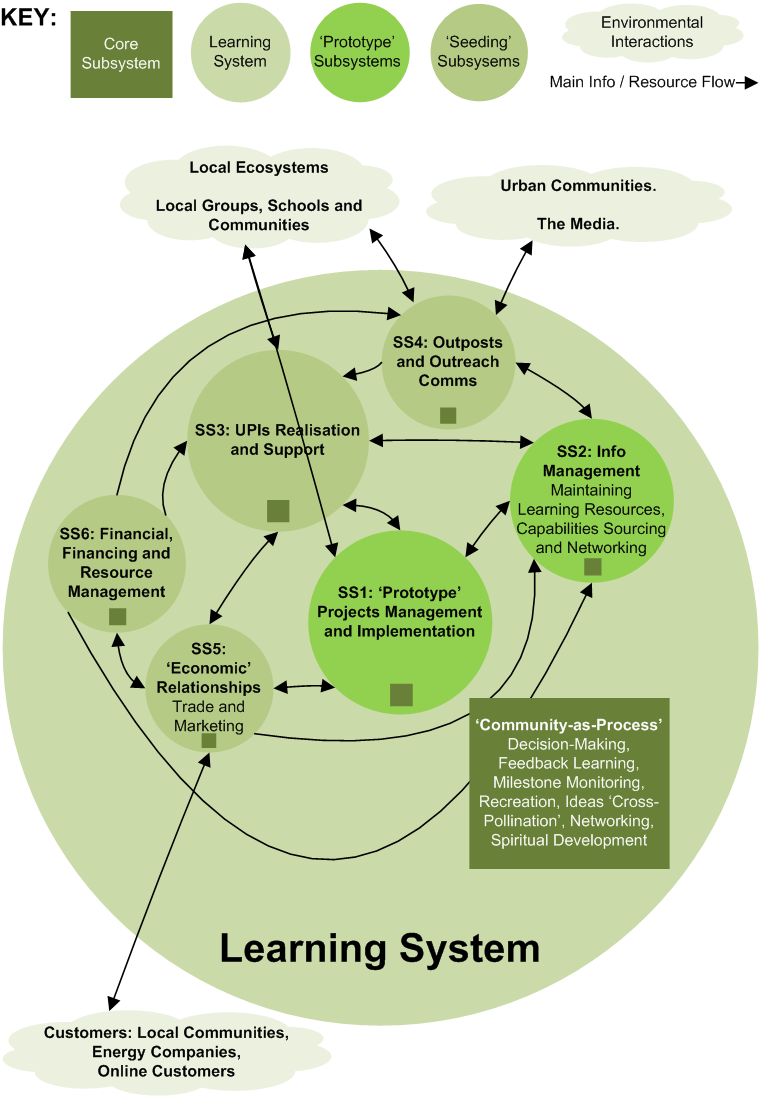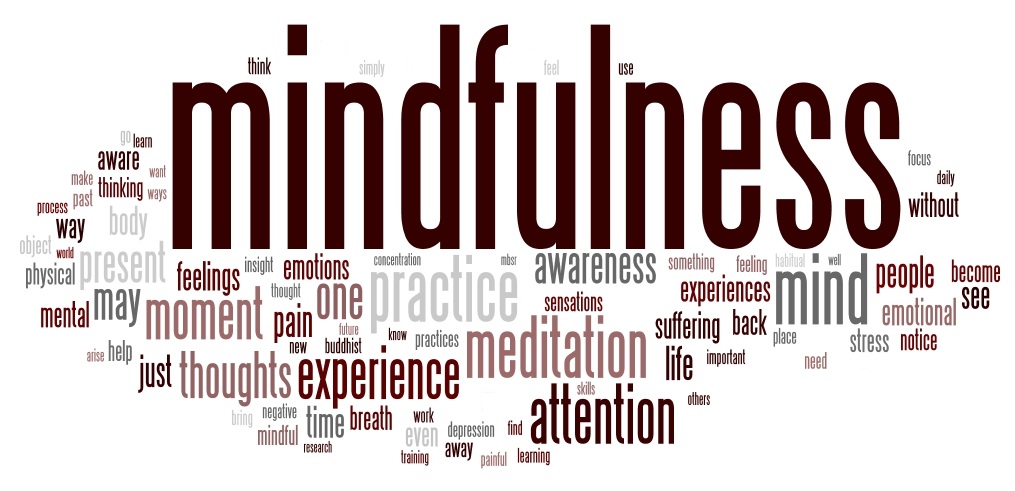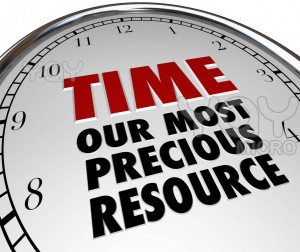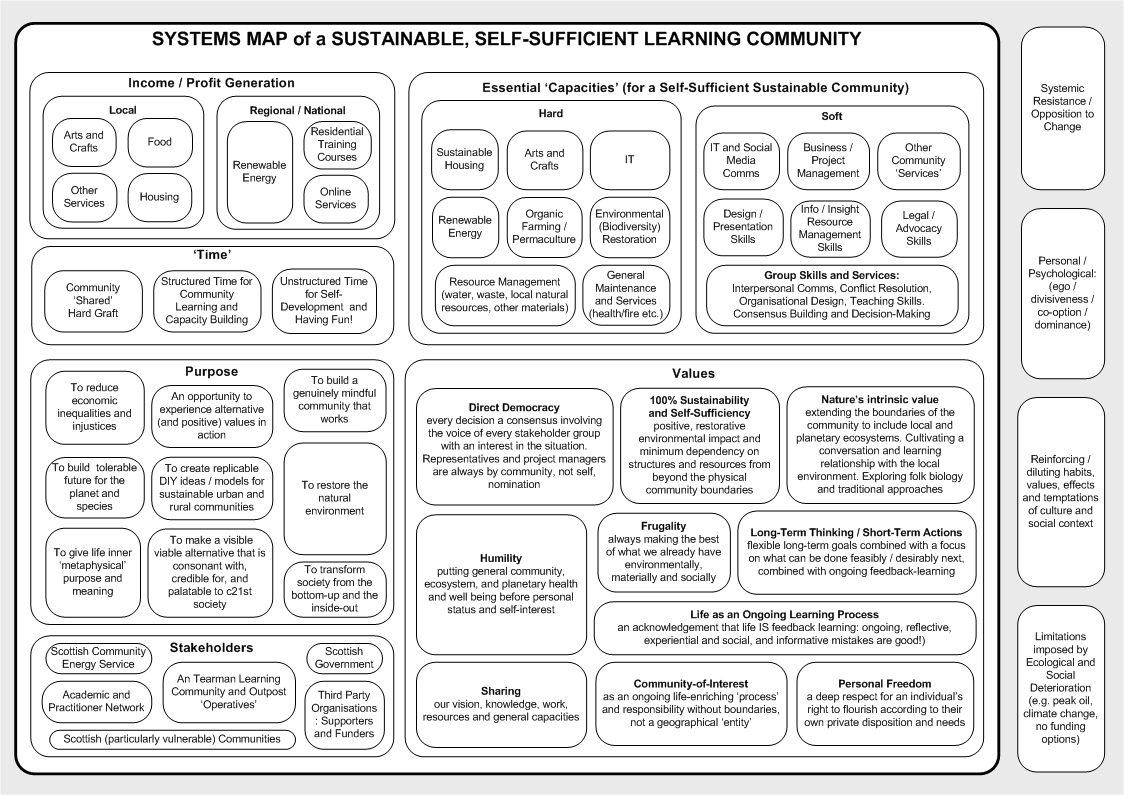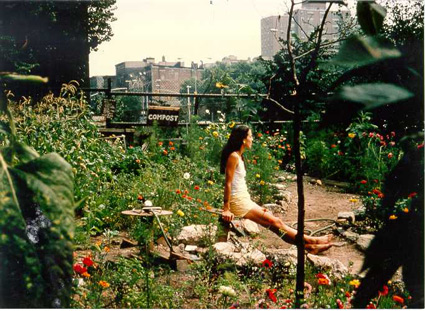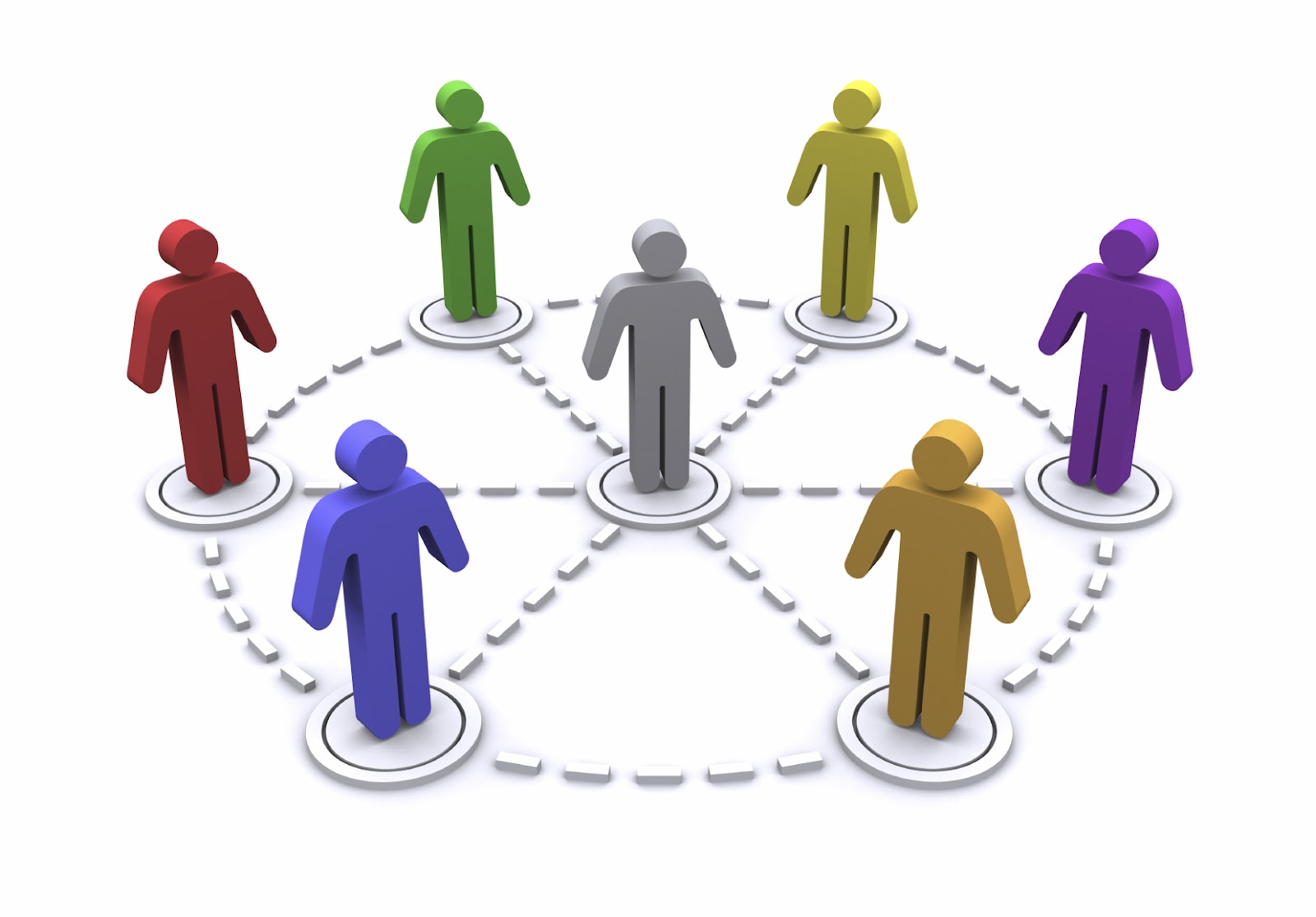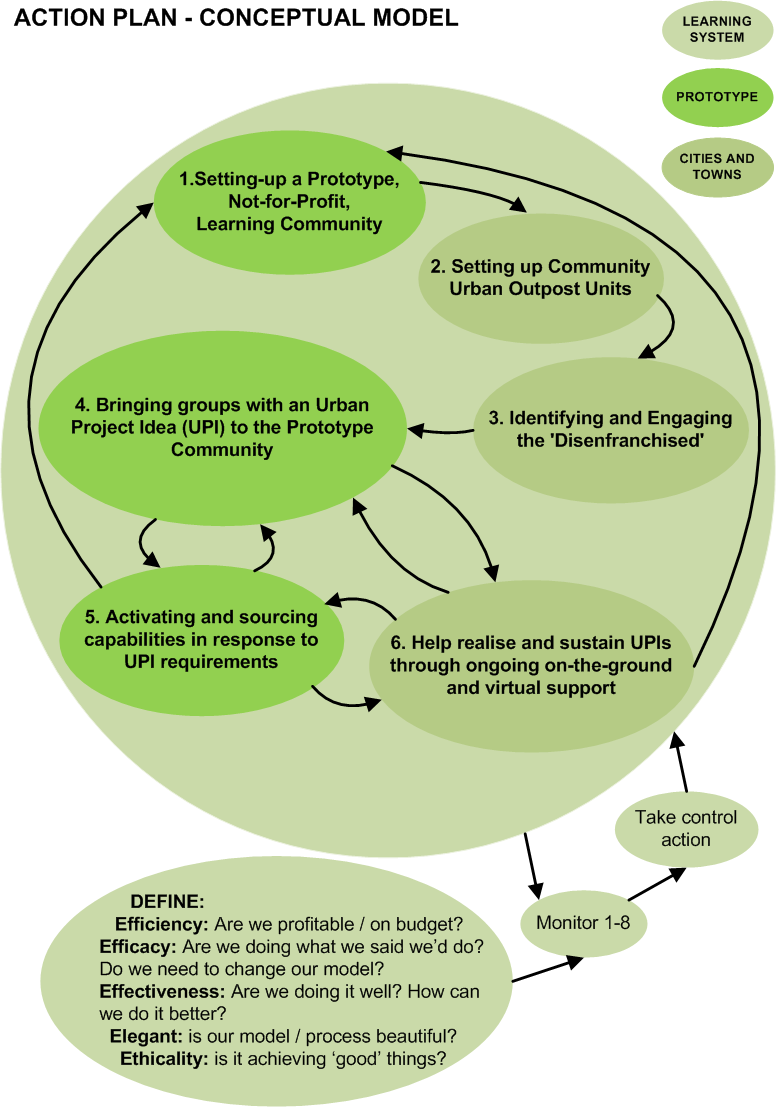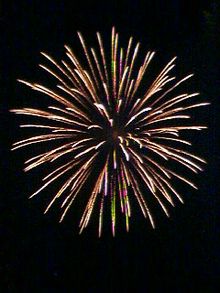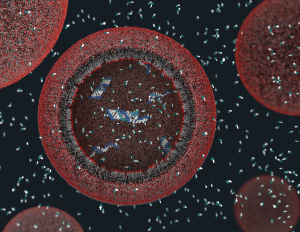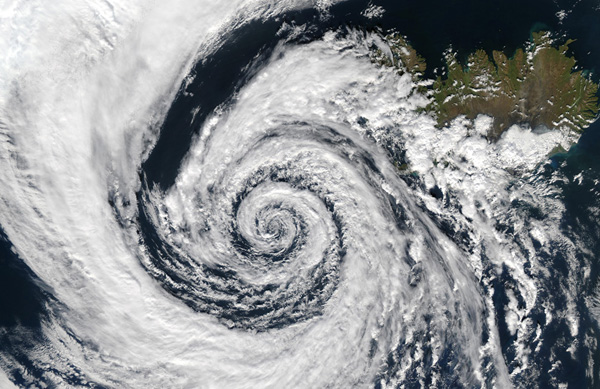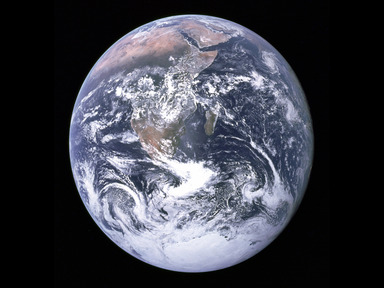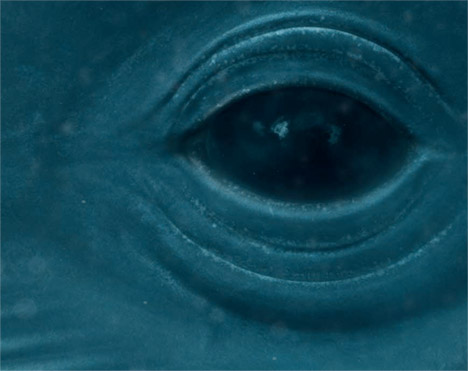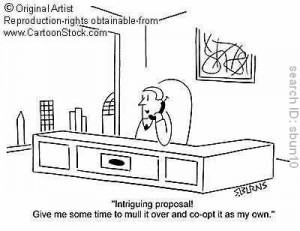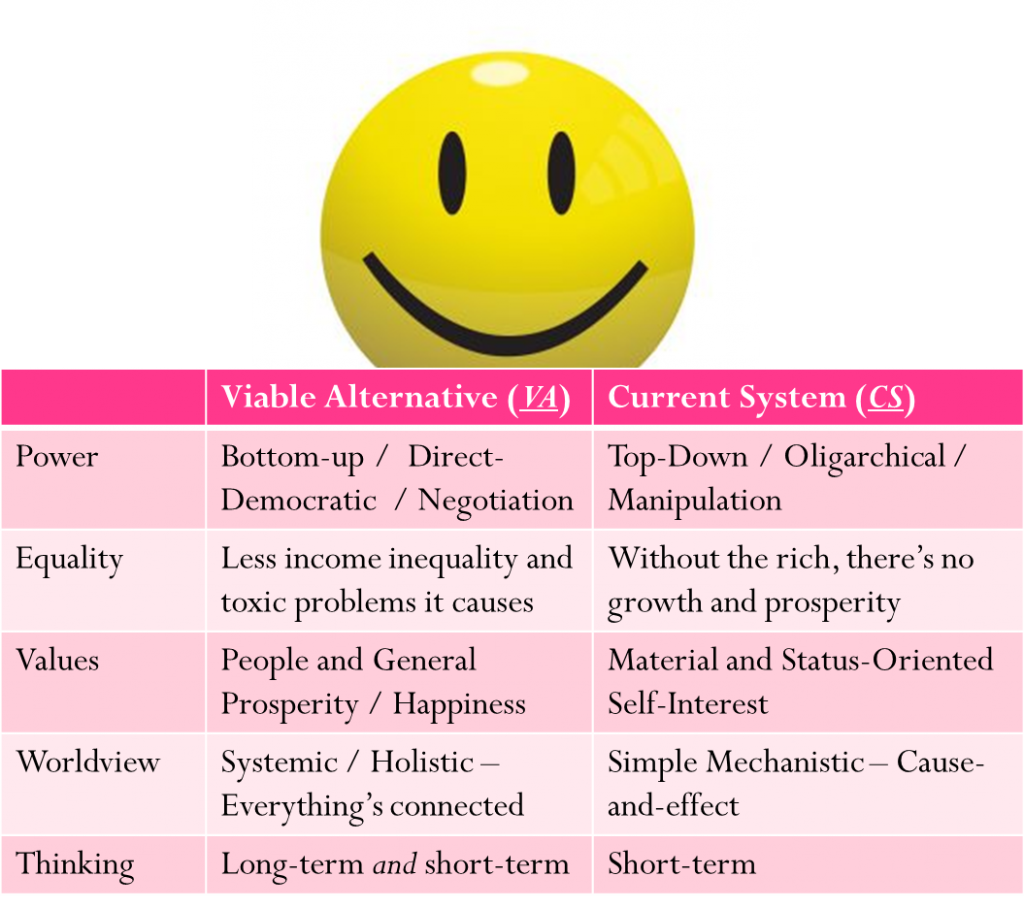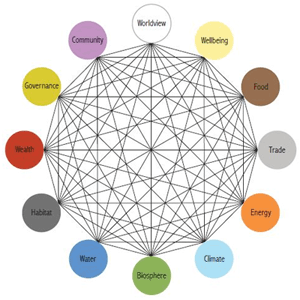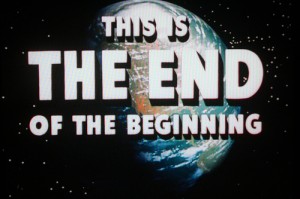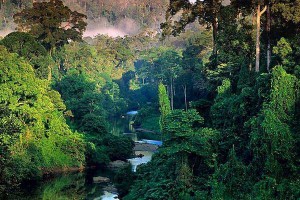Seeding a Viable Economic Alternative. Pt 2: The Principal Themes (Outcomes of a Systems Workshop at Future Connections 2012)
This is the second installment of a 4 part series about a soft systems workshop Arkadian ran with 20 PhD candidates at the Future Connections Conference 2012 in St Andrews, all of whom were conducting PhD Research on the theme of Sustainable Development.
Previously, we outlined the workshop structure, and described the session’s major outcome: an Action Plan for seeding a nationwide Viable Alternative to the current economic system. In the last two installments, Arkadian will be venturing some personal thoughts relating to the session outcomes that emerged during the analysis.
This week, however, we will be exploring four Themes that pervaded the discussion about a Prototype Community that might seed a Viable Alternative. As mentioned previously, some ideas here (and in Part 3 and 4) will be developed beyond the original session content as a result of their transaction (via Arkadian) with an ongoing experiment in developing an socioeconomic alternative (‘Wisdom Economy’) on the Isle of Bute: An Tearman.
1) Stewardship of the Diversity, Integrity and Beauty of the ‘Community-of-Interdependence’ (Nature first). It was generally agreed that, if the Community was to have a single guiding principle it should be the pursuit of a reverent partnership with Mother Nature. This combines active observation and experimentation, to enrich our objective understanding of Her systemic workings, and activities which promote a deeper experiential connection, and appreciation of Her intrinsic value.
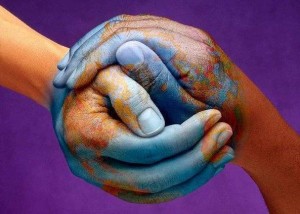 Although we place Nature first, as concerns practicing empathy for other and placing systemic needs above our own, our values are equivalent towards both Her and Our Community. We aim to cultivate individual awareness that the two are not separate but together constitute a single Community-of-Interdependence within which every ‘being’ performs a substantive role.
Although we place Nature first, as concerns practicing empathy for other and placing systemic needs above our own, our values are equivalent towards both Her and Our Community. We aim to cultivate individual awareness that the two are not separate but together constitute a single Community-of-Interdependence within which every ‘being’ performs a substantive role.
The fundamental goal of the Viable Alternative is to establish an equilibrium where we receive our material and non-material needs as a byproduct of enlightened care for the Community-of-Interdependence, with Nature taking priority. In pursuit of this, we complement Her strategies of achieving systemic integrity, productivity and beauty through diversity, reciprocity and work excellence in our approaches to the local ecology and our social milieu.
2) Performative Knowledge and Learning (Community-as-Process). How a rag bag of individuals, and hang-ups, might operate together effectively, ethically and enjoyably was probably the main, if subliminal, preoccupation of the session. Ultimately, this led to the group insight that ‘Community’ is a continuous reinforcing process, and not a ‘place’ or ‘entity’ as the concept is more commonly used.
 To think and act as a unit (‘togetherness’, ‘belonging’, ‘sharing’), our individual purpose, needs and experiences need to braid and coalesce with each others’. This couldn’t happen without the Structure, Principles and, particularly, the Time that would enable the Community to successfully plan, work, have fun and be together.
To think and act as a unit (‘togetherness’, ‘belonging’, ‘sharing’), our individual purpose, needs and experiences need to braid and coalesce with each others’. This couldn’t happen without the Structure, Principles and, particularly, the Time that would enable the Community to successfully plan, work, have fun and be together.
Also considered essential to acting as a unit is the ability for all members to have some grasp of the whole ‘blueprint’ of their particular Community project and, thus, an appreciation of the role, value and interdependence of all actors and activities therein. This requirement for inclusive participation in, and understanding of, the whole picture, in turn, implies limitations on the scope, size and organisation of the ‘units’ that comprise the wider Community System.
Moreover, there are no ‘experts’ here. Other, that is, than the Community itself. We consider the only real knowledge and learning is that which arises from, and returns to, our collective performance.
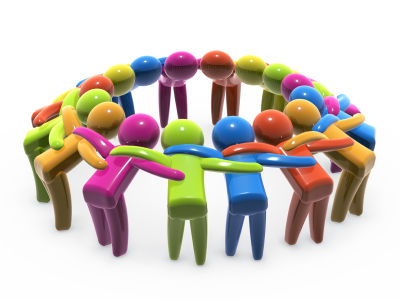 Know-how, erudition, irreverent cross-disciplinary romps, naive childlike experimentation, error and dispassionate collective assessment are all celebrated contributors to our ultimate purpose: a continuous social learning process that calls forth the unknown and unknowable world of the Viable Alternative. In this milieu, articulated knowledge functions as a part of collective activities rather than as an expertise that structures performance from without.
Know-how, erudition, irreverent cross-disciplinary romps, naive childlike experimentation, error and dispassionate collective assessment are all celebrated contributors to our ultimate purpose: a continuous social learning process that calls forth the unknown and unknowable world of the Viable Alternative. In this milieu, articulated knowledge functions as a part of collective activities rather than as an expertise that structures performance from without.
Below is a diagram of a Viable Systems Model (VSM) representing the Community’s organisational structure, which demonstrates the centrality of Community-as-Process’ to its success. A VSM is a systems thinking tool that applies the metaphor of living organism to an organisation, representing its main purposeful transactions with the environment as ‘organs’.
Ordinarily, a VSM presumes an ‘Executive Subsystem’ that monitors and orchestrates the operations of the whole – the equivalent of, say, the ‘The Board’ or the Prefrontal Cortex. However, in the model of the Viable Alternative Learning System, the wisdom of the ‘Director’ has been displaced by that of the ‘Collective’, in the form of the social processes from which our shared self-organising and self-regulating vision emerges.
3) Respect and Empathy for The Experiences of Other. Key to the healthy functioning of ‘Community-as-Process’ is respect for the predispositions and experiential histories of our fellows, even when they give rise to motivations, perspectives and worldviews very different from our own. Necessarily, this also entails developing our aptitude for dispassionate self-examination, so that we may each reflect critically on the roots of our own models, assumptions and prejudices.
To address these inner challenges, our aim is that everyone become adept in the pragmatic application of ‘tools’ that promote mindfulness of self and other – meditation, yoga, mediation, facilitation, discussion circles, non-violent communication, nature connection and systems methodologies such as Rich-Picturing, SODA and SSM.
The practical objective of all this is, to the extent possible, decouple personal experience from its deep cultural (and possibly, natural) entanglements with status, identity and ego, so that it’s performative potential may blossom. Deconstructing our ivory towers to build bridges of consensus. Transforming Knowledge and Experience as immutable personal possessions, into Knowledge and Experience as a dynamic shared property that informs and feeds back from impersonal activities-in-the-moment.
All very well, I hear you say, but what about me? Where do my individual needs fit in and what happens when they diverge from those of the collective? After all, even big happy families stifle personal growth at times, don’t they?
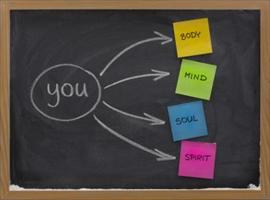 Making space for purely personal development, unsurprisingly, was another central theme of the discussion. As mentioned in the previous installment, a core design objective of the Prototype is to free a third of each week for each of us to pursue our own ‘becoming’ according to our own inclination. Our only constraint is that in exercising this right, we don’t impact negatively on the diversity, integrity and beauty of the Community-of-Interdependence.
Making space for purely personal development, unsurprisingly, was another central theme of the discussion. As mentioned in the previous installment, a core design objective of the Prototype is to free a third of each week for each of us to pursue our own ‘becoming’ according to our own inclination. Our only constraint is that in exercising this right, we don’t impact negatively on the diversity, integrity and beauty of the Community-of-Interdependence.
The Community may also allocate some of its own ‘activity and decision-making’ time to develop opportunities and environment in response to individuals’ identified or declared needs. This is deemed valuable work because it promotes diversity and redundancy, the magical underpinnings of productivity and stability for both Nature and Community.
 In summary, we take the view that a social system where individual variety, creativity and knowledge of the local natural environment flourishes according to its own will, where each node maintains positive interconnections to all others and contains the seed of the self-sufficient whole, and which can decide and mobilise effectively as a single organism, is one of optimal adaptability and resilience, and thus best equipped to face the environmental challenges of the future.
In summary, we take the view that a social system where individual variety, creativity and knowledge of the local natural environment flourishes according to its own will, where each node maintains positive interconnections to all others and contains the seed of the self-sufficient whole, and which can decide and mobilise effectively as a single organism, is one of optimal adaptability and resilience, and thus best equipped to face the environmental challenges of the future.
4) The Sanctity of Time for Community and The Individual had, by the end of the session, become a central mantra of the Learning System. Time is not perceived here as an abstraction, or an economic ‘obligation’, but as a resource of inestimable importance: the root source of those experiences most responsible for generating meaning, community and well being.
Thus, the need for the Viable Alternative to produce sufficient Time to satisfy our non-material requirements was a thread that pervaded the discussion. An indicator, possibly, of how overlooked, undervalued and misunderstood its role has become in the current economic system.
And so concludes our look at the principal 4 Themes underpinning the discussion, and of the outline of the session outcomes. We hope you’ll join in a fortnight for Part 3, where Arkadian will be discussing some personal views that emerged during the analysis.
Seeding a Viable Economic Alternative. Pt 1: The Action Plan (Outcomes of a Systems Workshop at Future Connections 2012)
This article is the first in a 4 part series relating to a soft-systems workshop Arkadian ran at Futures Connections 2012. The first 2 parts deal primarily with the outcomes of the session, whilst in the latter 2, Arkadian will be setting out some personal thoughts resulting from the analysis.
Participants were 20 PhD candidates from universities across Scotland, representing a broad variety of disciplines. All were conducting Research on the theme of Sustainable Development.
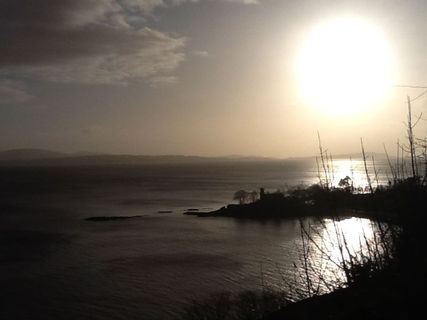 Since Futures Connections, the outcomes of this workshop have informed the decision-making of another project in which Arkadian is involved: An Tearman, on the Isle of Bute. An Tearman is an experiment in enacting a new socioeconomic model (‘Wisdom Economy’) involving a broad range of stakeholders. A prototype ‘blueprint’ heavily influenced by Permaculture principles is slowly emerging.
Since Futures Connections, the outcomes of this workshop have informed the decision-making of another project in which Arkadian is involved: An Tearman, on the Isle of Bute. An Tearman is an experiment in enacting a new socioeconomic model (‘Wisdom Economy’) involving a broad range of stakeholders. A prototype ‘blueprint’ heavily influenced by Permaculture principles is slowly emerging.
As the ideas generated by the workshop have contributed to the An Tearman project, so too have Arkadian’s learnings fed back into the current analysis, impacting on interpretations, and resulting in some development of the original workshop material, particularly in Parts 2, 3 and 4.
Next episode, we shall be discussing 4 Themes that pervaded the discussion, and in the last two installments, we’ll explore some ideas pertaining to the session outcomes. However, to begin we will outline the aims and structure of the workshop and describe its main outcome: An Action Plan for seeding a Viable Alternative.
The session’s Overarching Aim was:
WHAT?: To seed nationwide sustainable development.
HOW?: By building a self-sufficient and sustainable Community which demonstrates an inspiring, working model of a viable alternative to the current economic system.
WHY?: Because if we desire a tolerable future, there is an urgent necessity to begin our transition to a sustainable economy.
Participants were asked to consider 3 questions:
WHAT Personal Project would you bring to this Community?
HOW would it contribute to the Overarching Aim?
WHY is it important?
Responses were written on Post-Its in private and stuck randomly on a wall in What? / How? / Why? groups. The result fueled the group discussion. A Systems Map representing rough categories for the Post-Its and main topics of conversation appears below.
The main outcome of the session, unexpectedly, was an Action Plan for seeding nationwide sustainable development. This was as follows:
1. Set-up a Prototype Not-for-Profit Learning Community, which incorporated all the essential capacities of a nationwide sustainable Viable Alternative to the current economic system (see Systems Map: Essential ‘Capacities’). In other words, a ‘whole-system’ Prototype in miniature.
The original Community is envisioned as a cross-pollination of practical experiment and virtual network. At the outset the burning objective of the practical experiment is to generate zero impact revenue streams and become profitable (see Systems Map: Income / Profit Generation).
The virtual network is comprised of experts representing a wide variety of disciplines and experiential backgrounds who, whilst unable to commit substantial time to the practical experiment, are willing to contribute to decision-making whenever situation-specific expertise is required.
Community Time is split equally three ways:
(i) Collaborative physical transaction with the natural environment.
(ii) Structured time for community activities and decision-making. While this also includes the management of social groups and events, the major proportion of this time involves mindful and transparent group reflection upon both the practical experiment and social dynamics. Models, measures-of-success and next step actions are then co-calibrated in response to what has been learned.
Overarching decision-making and consensus-building are all highly-structured processes. They are third-party facilitated and knowledge is externalised using visual tools so as to depersonalise and depolarise opinion. All members are always involved, irrespective of subject, age or expertise. Thus, judgments and learning are informed by the broadest diversity of experience, and the emerging blueprint for the Viable Alternative is shared by all.
(iii) Unstructured time for personal development according to individual inclination. Spiritual, knowledge and skill development, leisure and recreational activities, time for special relationships, FUN? This is ‘You’ time, however you wish to spend it.
One of the central aims of the physical experiment is to generate a minimum of 4 free days every week for (ii) and (iii). Whilst profitability is undeniably important, it plays, and will always play, second fiddle to the meeting of the Community’s deeper non-material needs.
 2. Setting up Community Urban Outpost Units. Now that our Prototype is stable, we use some of our assets to fund the despatch of ‘advocates’ to cities and large towns. As urban areas are where the current economic system is most resistant to change and its inequities are suffered most acutely, we believe it is here that successful exemplars of a Viable Alternative will achieve the most resonance.
2. Setting up Community Urban Outpost Units. Now that our Prototype is stable, we use some of our assets to fund the despatch of ‘advocates’ to cities and large towns. As urban areas are where the current economic system is most resistant to change and its inequities are suffered most acutely, we believe it is here that successful exemplars of a Viable Alternative will achieve the most resonance.
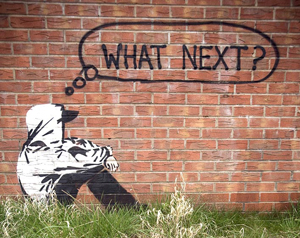 3. Engaging the ‘Disenfranchised’. Our advocates seek out and engage those groups that have a vested interest in a Viable Alternative. Perhaps the most obvious are young and disadvantaged peer groups, who have social capital but a bleak, hopeless future under the current system. We share the Prototype ‘blueprint’ with them, and encourage them to think about how they could positively transform their own environment in order to meet local needs.
3. Engaging the ‘Disenfranchised’. Our advocates seek out and engage those groups that have a vested interest in a Viable Alternative. Perhaps the most obvious are young and disadvantaged peer groups, who have social capital but a bleak, hopeless future under the current system. We share the Prototype ‘blueprint’ with them, and encourage them to think about how they could positively transform their own environment in order to meet local needs.
4. Bringing groups with an Urban Project Idea (UPI) to the Prototype. Groups with strong ideas, a willingness to learn, and a commitment to implement their UPI, are invited to the Prototype for experiential immersion in Community work, principles, values and decision-making. Stepping ‘outside’ of their everyday lives enables the groups to reflect upon their UPI with greater clarity and objectivity, and plan free of those shadowy constraints – models, relationships, habits, cues etc. – that hamper decision-making within context.
The group’s transition into participating in our emergent ‘blueprint’ is facilitated gently and mindfully. It is important we allow time for them to grasp the Prototype’s holistic model and processes, for their UPI to gestate, and for two fragile social systems (Prototype and group) to adapt to each other and reach the equilibrium necessary for them to operate effectively together.
5. Activating and sourcing capabilities in response to UPI requirements. When the group ‘feels’ sufficiently clear about their UPI, they are given the opportunity to conduct a Pilot within the Prototype.
The Community participates in related decision-making with openness and humility, seeing each UPI as an opportunity to learn and expand our own capacities. Mindful efforts are made to ensure that development is always under the direction of the group, and that our role remains that of a receptive enabler: sourcing and contributing specialism, materials and encouragement in response to the Pilot’s prevailing needs.
6. Helping realise the UPI through ongoing on-the-ground and virtual support. Upon completion of a successful Pilot, the group returns to their city or town to implement their UPI. By this time, they are equipped with ‘blueprint’ and experiences of a working Viable Alternative, and the skills to bring forth their own unique interpretation by transforming their local urban environment.
Throughout the realisation of their UPI, we continue to provide moral, specialist and financial support, and a sanctuary for retreat, review and restoration in the face of setbacks and systemic resistance.
UPIs are never colonies or subsidiaries, but rather lateral extensions of an expanding, highly interdependent Learning System. This emergent ‘Viable Alternative in action’ is held together by mechanisms that reinforce interrelationships: ritual gatherings where intent, principles and values are collectively reviewed, work and insights shared, and fun had. In the interim there are ‘dovetails’ – members whose role it is to participate in the decision-making processes of two constituent groups, thus facilitating the continuous flow of social learning through the whole system .
Although language may have represented this Action Plan as a linear sequence of stages, it was conceived as something more dynamic, reflective and feedback-driven, better captured visually in the Conceptual Model below.
And so ends our look at a possible ecology for a Prototype Viable Alternative, and an Action Plan for how it might seed nationwide transition bottom>up, inside>out and city>rural by way of an emergent Learning System.
To conclude this installment, possibly the most notable characteristic of the Action Plan on face value (particularly, one designed by a group of stakeholders operating at the leading-edge of sustainable development) is its humility. Perhaps when the scale, complexity and uncertainty of the challenge we face is spread across a wall for all to see, the only reasonable response is to design a system that acknowledges its own ignorance, creates the future one step at a time, and builds collective experience, reflection, experimentation and endeavour into its core DNA?
We hope you’ll join in a fortnight for Part 2, when we shall be exploring the four major themes that pervaded and informed the discussion of the Action Plan.
What I Learned from Destroying the Universe
Happy New Year! Arkadian’s first blog of 2013 is a brief account of a recent, and surprisingly meaningful, personal experience of a natural system, and the important lessons learned.
Over the Christmas holidays, during a rainstorm, I took the dog for his usual walk in a local wood. En route there’s a place where I bridge a stream on a fallen tree trunk.
Halfway across, something caught my eye. Hovering above the swollen and fast-flowing water, was a perfect Giotto circle, white, saucer-sized. I got down on my belly for a closer look. It was an exquisite ‘universe’ of tiny bubbles, revolving clockwise peacefully, seemingly oblivious to the mayhem surrounding it (I didn’t have my cameraphone, so other ‘attractors’ this universe called to mind will have to be used instead for illustration. There is also a short video of a similar phenomenon at the end).
For 45 minutes I lay spellbound, trying to discern the dynamics underpinning its beautiful form and behaviour. Immediately, upstream a large rock, barely breaking the surface, split the current into three highly erratic patterns: a fast and a slow channel, and another that surged over the top in intermittent waves. These flowed either side of the universe and beneath it, respectively. Evidently, some eddy arising from their interaction was causing bubbles to organise as they did. But no matter how hard I studied, I couldn’t fathom how such chaos could have given birth to so elegant and serene an entity.
Eventually, my inner scientist could resist no longer. Reaching down, I put my little finger carefully onto the surface of the fast channel about a hand’s span from the edge of the universe. Pft! In a moment it disintegrated into a million bubbles, swept downstream on the torrent.
I waited a further 15 minutes, expecting the universe to reform. However, although random associations of bubbles coalesced from from time to time, none maintained location or integrity for more than a few seconds before being washed away.
The dog was palpably exasperated by this point, so we resumed our walk but returned for another look on the way home. Nothing. Most days since, I’ve passed this spot. Never have I seen the universe again.
So what three important lessons did I learn from destroying the universe?:
1. That no natural system is inevitable. Half of me still can’t accept that so robust a phenomenon could have been an accident. The little universe played a trick on my mind such that it seems inconceivable the specific environmental conditions in that area of the stream would never have given rise to it or will not again at some point in the future.
My other half, however, is now deeply humbled by a new certainty about uncertainty. The only reasonable conclusion it can draw from an honest review of the sporadic serendipitous coincidences by which a natural system, such as the universe, evolves from anarchic molecular storms, is that Fate and Destiny are tales told in hindsight. Nothing is meant to be. This half finds the thought oddly comforting.
2. That no natural system is independent of its wider environment. My intervention was based on a long and careful assessment of possible interrelationships between the universe’s behaviour and environment. I deemed the touch of my pinkie sufficiently gentle and distant from the core system to cause, at worst, a tiny perturbation that might afford some penetration of its workings.
But the universe depended on a context much wider and richer than I could have expected. Even within my narrow scope of observation, this singular micro-dance between pattern and (apparent) disorder defied any linguistic, mechanistic or mathematical generalisation.
That it also depended on the outlying point in the stream at which my finger interposed, however, drew my puny mind flailing into all the other dynamic factors vital to the universe’s becoming – the bubbles’ surface properties, the woodland shelter, the upstream topography, the rainfall intensity, the climatic pressure, and so on, inwards and outwards into a matrix of wholly interdependent and nested systems.
One can only quake in awe at the complexity, and in terror at the hubris of a culture that imagines it can reduce and conquer such prodigious abundance. The Modern Self thinks itself independent of its world and, thus, perceives the pieces of its world similarly: believing each can be treated in isolation. These are suicidal delusions it would do well to wake from.
3. That one shouldn’t be fooled by the apparent stability of a natural system. Although I never expected the universe to endure forever, its superficial calm, autonomy and resilience in relation to its riotous milieu communicated a permanence that would easily tolerate some interference. This was an illusion born from ignorance. The merest touch of my finger was all it took to disturb some hidden, fundamental control parameter, and initiate a total irreversible breakdown.
To summarise, it is my view that the universe was an impossibly fortuitous, complex, and mysterious accident (this includes my own ability to contemplate it). The illusion that I was separate from it, had mastery over it, and could assume its stability based on appearances alone was a recipe for disaster. The same assumptions likely hold for all natural systems, including the biosphere of the Earth.
What I learned from destroying the universe is that the wisest approach for humankind is to cultivate a new personal humility and responsibility towards the natural systems we experience every day: to intervene in their unique, context-specific lives with mindfulness and empathy, and to seek a partnership that follows their lead in all things. We have so much to learn.
We hope you’ll join us in a fortnight for our first major series for 2013: a model for seeding a nationwide viable alternative to the current economic system (co-created by a team of PhD candidates focusing on sustainable development).
*Since writing this blog, Arkadian came across a similar phenomenon in another stream, and this time took a video (see below). Whilst the current and context is radically more sedate, the behaviour is in many ways very similar to the instance described above and offers a good illustration.
What is Occupy? Collective insights from a ‘Whole Systems’ Session with Occupy followers
This article is about a ‘whole systems thinking’ session Arkadian ran with 15 Occupy followers of all ages and backgrounds. All participants were required to answer 3 questions: –
(1) What is Occupy’s purpose; (2) How should this purpose be achieved and; (3) Why was it important?
Personal thoughts were written on post-its, stuck on a wall, and organised by the group according to content similarity and difference. The discussion fueled by these activities gave rise to 6 collective insights (the 7th is an insight Arkadian derived from the others): –
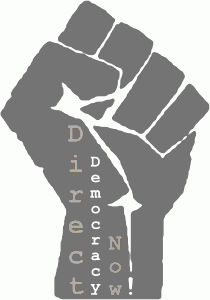 (1) Occupy is a grass-roots, direct-democratic movement
(1) Occupy is a grass-roots, direct-democratic movement
(2) Occupy is ‘about’ co-creating and enacting a Viable Alternative to the current system
(3) The Viable Alternative is a collective vision
(4) Achieving the Viable Alternative requires building critical mass
(5) Building critical mass depends on making the Viable Alternative simple, relevant and clear to the wider population
(6) Aims could be best achieved through grass-roots ‘campaigns’ connecting the Viable Alternative to local community issues
(7) These insights had implications for Occupy’s organisational design
There follows a brief explanation of each: –
1. Occupy is a grass-roots, direct-democratic movement: All followers saw Occupy as ‘of the people / for the people’, independent of, and transcending all, other organisations. There was genuine concern that ‘partnerships’, or Occupy chapters becoming formal or political entities, would compromise the essential qualities of this idea. Nevertheless, it was also acknowledged that high profile support could, and had, delivered some powerful PR.
The solution proposed was that ‘partnerships’ should always be one-way and arms-length only, i.e. limited to inviting, or allowing, third parties to sign up to Occupy’s (viz: ‘the people’s’) aims and principles. But what aims and principles?
2. Occupy is ‘about’ co-creating and enacting a Viable Alternative to the current system: The most powerful theme that emerged in the discussion. To get a handle on some of the structural principles of this Viable Alternative, ask yourself the following questions… 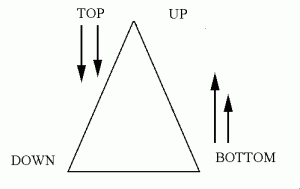
Power: Would the world be better if people had greater involvement in decisions that affect their lives and future?
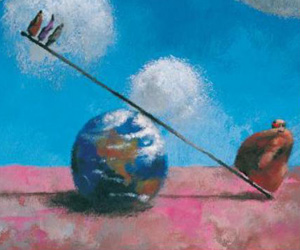 Equality: Would the world be better if the gap between rich and poor were reduced? (N.B. Not to a ‘ Communist’ extreme, merely a lessening of the vast multipliers separating high / low incomes and developing / developed nations, and their toxic impact on society and environment).
Equality: Would the world be better if the gap between rich and poor were reduced? (N.B. Not to a ‘ Communist’ extreme, merely a lessening of the vast multipliers separating high / low incomes and developing / developed nations, and their toxic impact on society and environment). 
Values: Would the world be better if quality of life and well being were valued over material and status-driven self-interest?
Worldview: Are the big social, environmental and economic challenges connected in any way? Might addressing one have beneficial effects on others? 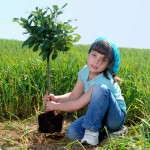
Thinking: Should the well being of future generations and the long-term viability of life on our planet be important to current decision-making?
If you answered ‘Yes’ to any, or all, of these questions then you’re ‘Occupy’. Below is a rough summary table comparing the principles of the Viable Alternative to those of the current system.
So what actions does all this imply? Firstly, if they are widely shared, then these structural principles could provide the ideal framework for coherent organisation, action and communications, and solidarity, across diverse contexts.
Secondly, the Viable Alternative is a positive idea: it’s about a happier, better future. Whilst its necessary to highlight why change is necessary, negative news and arguments about the nitty-gritty can drive people away. Emphasising these higher-level, common and cheerful principles, on the other hand, could score greater successes with the wider population.
3. The Viable Alternative is a collective vision: The whole group shared a belief in the urgent necessity for the Viable Alternative, which in turn, seemed dependent upon an understanding of the scale and interconnectedness of the issues.
However, each individual held their own beliefs about what the important problems were, how they were connected, and the appropriate remedies and actions: a product of their life experiences, personal interests and, for many, exposure to new information since engaging with the movement.
Nevertheless, the post-its-on-the-wall represented a truly epic mess, one that evidently required highly situation-specific solutions, each of which defied the analytic or predictive capabilities of any ‘expert’. Recognition of this within the group seemed to drive processes where individual experiences were tools for building, negotiating and informing a dynamic picture of NOW, in order to decide the best next step(s) only, not the grand master plan.
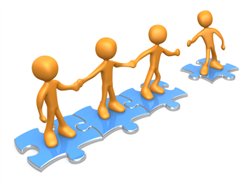 Rather than disagreements about which view was ‘right’ or ‘wrong’, all views seemed appreciated as valuable and partially right. In a sense, the group behaved like a ‘super-brain’, leveraging many lifetimes’ worth of perspectives, knowledge and experience to reach wise ‘objective’ assessments and decisions about an impossibly complex ‘subjective’ situation.
Rather than disagreements about which view was ‘right’ or ‘wrong’, all views seemed appreciated as valuable and partially right. In a sense, the group behaved like a ‘super-brain’, leveraging many lifetimes’ worth of perspectives, knowledge and experience to reach wise ‘objective’ assessments and decisions about an impossibly complex ‘subjective’ situation.
So what are the implications of all this? Firstly, if collaborative decision-making can be so individually empowering and collectively clever, then all Occupy followers should be furnished with simple group moderation skills and ‘whole systems’ tools. Processes that focus discussions on external representations (pictures / post-its / models etc.) should become a sine qua non of the movement.
Secondly, the movement should stress that, whilst expressing a personal view is the inalienable right of any follower, unless its braided into a collective decision, it ain’t Occupy!
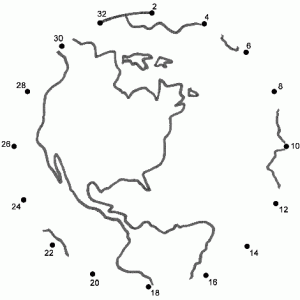 Lastly, if action is motivated by seeing the connections between disparate social, economic and environmental issues, then Occupy should underscore ‘stories’ that highlight the ‘connections’, and fast track new members into contributing to collective decision-making – judging by the discussion, it’s difficult not to ‘join-the-dots’ when exposed to the Occupy ecology.
Lastly, if action is motivated by seeing the connections between disparate social, economic and environmental issues, then Occupy should underscore ‘stories’ that highlight the ‘connections’, and fast track new members into contributing to collective decision-making – judging by the discussion, it’s difficult not to ‘join-the-dots’ when exposed to the Occupy ecology.
(4) Achieving the Viable Alternative requires building critical mass: Reflection upon this fact led rapidly to the recognition that human and financial resources were critical priorities, and that there were probably no shortcuts to them.
(5) Building critical mass depends on making the Viable Alternative simple, relevant and clear to the wider population: The second dominant theme of the session. To successfully engage the wider population, it was deemed Occupy needed communications that were simple, relevant to the differing needs of specific target audiences, and employed clear popularly-understood terminology pitched at the appropriate level of understanding, e.g. stock phrases like ‘socioeconomic justice’ and ‘ecological limits’ were not understood by many in the group. It was also considered important that these messages were backed-up by incontestable evidence and sources, and communicated solidarity.
Everyone also acknowledged this would entail outwitting the ‘guardians’ of the current system ‘at their own game’, exploring channels that they don’t, or can’t easily, command, and responding quickly and devastatingly to opposition. The discussion highlighted that intelligent, reflective information management – researching, screening, organising, tailoring – was central to Occupy’s role and ultimate success.
So, to recap. Occupy needs to…
(i) Organise without being an organisation.
(ii) Communicate a Viable Alternative when no-one can know what it is, and where it is only made manifest via specific situations and perspectives.
(iii) Create an outward appearance of solidarity when structured disagreement is an essential requirement.
(iv) Use channels not covered by the ubiquitous guardians of the current system, whilst building volunteers, funds and critical mass.
What solution to these challenges did the collective propose?
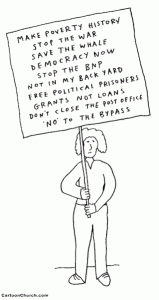 (6) Grass-roots ‘campaigns’ connecting the Viable Alternative to local community issues: Explore and discuss ‘issues’ door-to-door. Those that resonate, have local relevance, and are aligned with the Viable Alternative could then become the focus of grass-roots campaigns, building to direct ‘visible’ action, and all informed by Occupy’s structural principles, particularly, inclusive community decision-making. Not talking and blaming, but showing the world how things could be: through small-scale collaborative achievement and learning.
(6) Grass-roots ‘campaigns’ connecting the Viable Alternative to local community issues: Explore and discuss ‘issues’ door-to-door. Those that resonate, have local relevance, and are aligned with the Viable Alternative could then become the focus of grass-roots campaigns, building to direct ‘visible’ action, and all informed by Occupy’s structural principles, particularly, inclusive community decision-making. Not talking and blaming, but showing the world how things could be: through small-scale collaborative achievement and learning.
(7) These previous 6 insights had implications for Occupy’s organisational design: The final insight, Arkadian’s own, was that attaining all of the previous objectives implied a radically new organisational design, lest rapid growth give rise to hierarchy – the spoiling of many a revolution and NGO, and, in Occupy’s case: a fundamental hypocrisy.
A model where multiple ‘cross-pollinating’ cells are structured around local campaigns / action and mutually agreed principles of the Viable Alternative, perhaps? For a future session…
So, to conclude, at Occupy’s heart is a Viable Alternative that really is the current system turned on its head. A total paradigm shift, but a necessary one, if we are to share a remotely tolerable future.
Moreover, maybe change is easier than it seems. After all , the principles of the Viable Alternative are neither unfamiliar nor new, are they? Arguably, they, and not those of the current system, have determined how we cooperate with our nearest and dearest since time immemorial. We just need to realise the whole world could and should work this way.
Why Corporate Regulation is a Socioenvironmental Necessity. Part 3 of 5: Why does A Diverse System = A Stable System?
Delighted that you’ve joined us for the third installment of our first Arkadian analysis for 2012, where over five short articles, we will show how we reached the series title’s conclusion by way of the following question: –
“What difference between natural / social systems and the current economic system causes the former to tend towards diversity and stability, and the latter, uniformity and instability?”
In Weeks 1 and 2, we investigated why ecosystems and ‘civilisation’ tend towards diversity and stability. It was proposed this was attributable to virtuous dynamics that promote long-term systemic stability and resilience by driving increasingly fine-grained specialisation / cooperation, whilst inhibiting environmental dominance by particular species or social ‘groups’.
Next week we will be putting forward an explanation as to why the current economic system displays the reverse trend but, for now, we thought it worthwhile to explain briefly the connection between diversity and stability. Why exactly does a change in the former result in a like change in the latter?
Put simply, in a diverse system, the health of the whole (‘productivity’) isn’t dependent on the performance of only a few parts.
 For example, imagine a disadvantaged family where Dad is the only breadwinner. If he has an accident, no-one eats. If the house blows down in a storm, there’s no-one to rebuild it. Compare the situation with a second family where several other members also contribute to the household income. Because ‘productivity’ is distributed across several people, the overall family ‘system’ is much more able to adapt to an accident-prone Dad and / or a force majeure.
For example, imagine a disadvantaged family where Dad is the only breadwinner. If he has an accident, no-one eats. If the house blows down in a storm, there’s no-one to rebuild it. Compare the situation with a second family where several other members also contribute to the household income. Because ‘productivity’ is distributed across several people, the overall family ‘system’ is much more able to adapt to an accident-prone Dad and / or a force majeure.
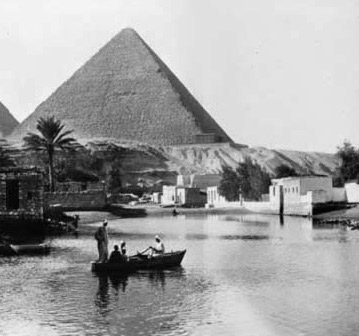 A classic instance of systemic over-dependency at a macro-societal level is Ancient Egypt, which teetered on a single variable: the annual flooding of the Nile (taken from the excellent ‘Water’ by Steven Solomon). The ‘inundation‘, as it was known, rejuvenated the plains with fertile silt and washed away soil poisons, to produce the most self-sustaining and fertile farmlands of the ancient world.
A classic instance of systemic over-dependency at a macro-societal level is Ancient Egypt, which teetered on a single variable: the annual flooding of the Nile (taken from the excellent ‘Water’ by Steven Solomon). The ‘inundation‘, as it was known, rejuvenated the plains with fertile silt and washed away soil poisons, to produce the most self-sustaining and fertile farmlands of the ancient world.
The exclusive focus of the political elite was water management: senior priest-managers led departments for overseeing dikes, canal workers and measuring river levels; and top dog, Pharaoh’s, fundamental godly responsibility was mastery of the flow of the great river.
Unsurprisingly then, the Nile and Egyptian history ebb and flow in perfect synchronicity. Without exception, the Old, Middle, and New Kingdoms, as well as the later periods of Greek and Byzantine rule, bloom with the return of the regular cycle of flooding and crumple with climactic dry periods into centuries of disunity, chaos and foreign invasions. Thus, despite many environmental blessings, ultimately, the stability and resilience of this mighty civilisation and its elite were slave to the caprices of its one water source, in a way that a country with abundant springs, rivers and lakes could never be.
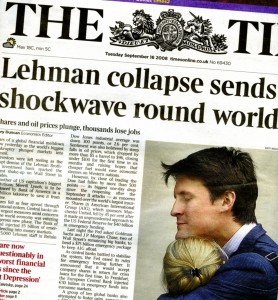 Our third and final example – the current economic downturn – illustrates uniformity and instability at a global level. Here, the world’s banking system was rendered so fragile by the interdependency of a few titanic banks and financial services firms, that massive external intervention was required to prevent total meltdown when one of them, Lehman Brothers, filed for bankruptcy in 2009. It is a crisis and an intervention for which we shall all suffer for many decades to come.
Our third and final example – the current economic downturn – illustrates uniformity and instability at a global level. Here, the world’s banking system was rendered so fragile by the interdependency of a few titanic banks and financial services firms, that massive external intervention was required to prevent total meltdown when one of them, Lehman Brothers, filed for bankruptcy in 2009. It is a crisis and an intervention for which we shall all suffer for many decades to come.
But why had the economic system not behaved like the natural / social systems we looked at in Weeks 1 and 2, and become increasingly diverse and stable as it expanded? We hope you’ll drop in next Friday to find out.
Why Corporate Regulation is a Socioenvironmental Necessity. Part 1 of 5: Why do Ecosystems tend towards Diversity and Stability?
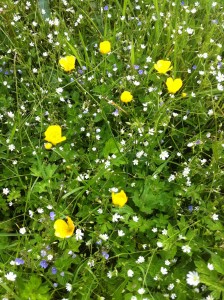 Happy New Year and welcome to our first Arkadian analysis of 2012. Over the next five weeks we will be working towards the conclusion of the title of the series by exploring the answer to a simple question: –
Happy New Year and welcome to our first Arkadian analysis of 2012. Over the next five weeks we will be working towards the conclusion of the title of the series by exploring the answer to a simple question: –
“What difference between natural / social systems and the current economic system causes the former to tend towards diversity and stability, and the latter, uniformity and instability?”
In a world where the latter now poses a mortal threat to the former, we considered this to be a question of some significance. Could we learn from the way natural / social systems self-regulate in a way that benefits all, to design an ecologically-and-socially-just economic system?
Our analysis will be set out in five short articles, launching Friday mornings throughout January and early February: –
(1) Why do Ecosystems tend towards Diversity and Stability? Friday 6th January 2012.
(2) Why does (did) Civilisation tend towards Diversity and Stability? Friday 13th January 2012.
(3) Why do Diverse Systems = Stable Systems? Friday 20th January 2012.
(4) Why does the Current Economic System tend towards Uniformity and Instability? Friday 27th January 2012.
(5) How do we create a Diverse and Stable Economic System? Friday 28th September 2012.
So without further ado, let’s move onto our first question of the series:
Why do Ecosystems tend towards Diversity and Stability?
As a general rule the longer that ecosystems remain undisturbed by external factors, the richer they become. The oldest – the rainforests – are estimated to hold over half of all species, despite covering only 6% of the Earth’s surface. Why should 70m years of evolution against a backdrop of dynamic climate fluctuations give rise to increasing variety and not just a few dominant species?
MODEL 1 of our analysis below proposes an answer (N.B. If you have trouble reading the text, click on the diagram to open it in a new browser tab and then refer back to the explanation here).
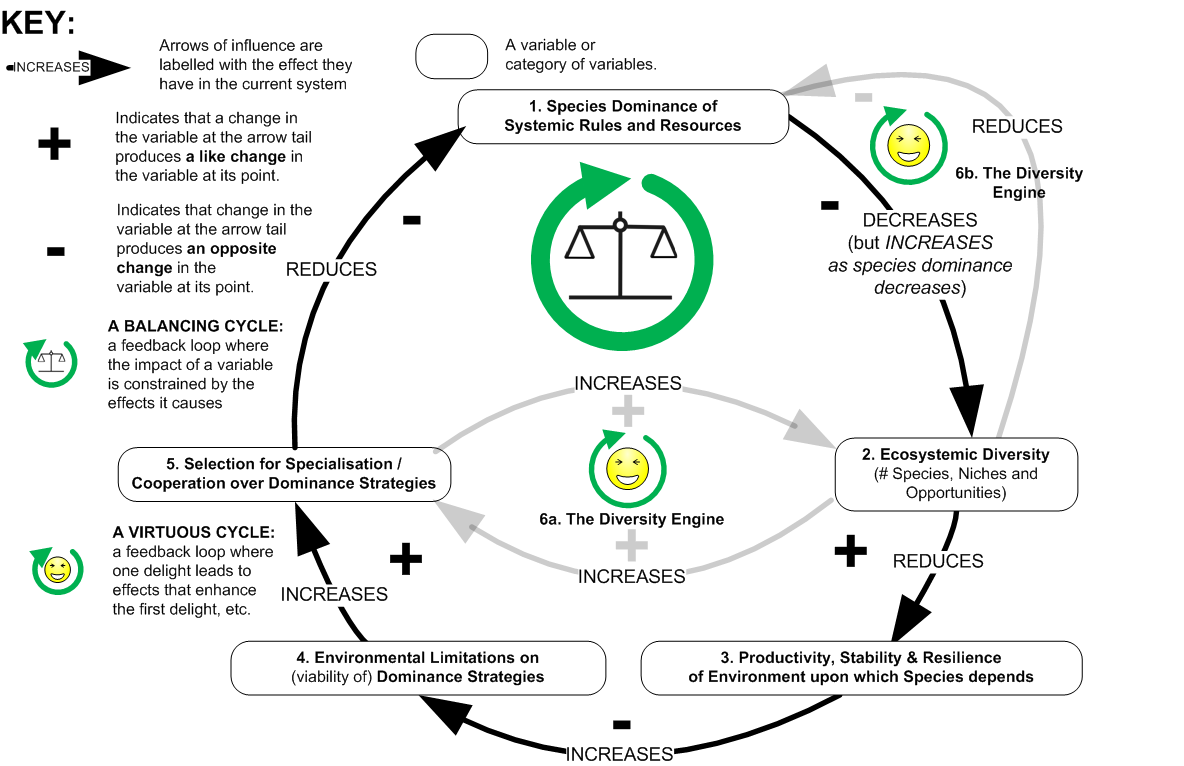 Begin at the topmost variable and follow the arrows clockwise around the loop. (1) Put yourself in the position of a species that pursues total dominance over its local environment. (2) Despite considerable early successes, it’s not long before your manipulation and consumption begin to impact adversely on other species. (3) As local biodiversity diminishes, so too do the health, resilience and stability of the ecosystem as a whole, (4) resulting in ever-tighter constraints on your actions and, ultimately, the collapse of the environment upon which your own survival depends. (5) Your extinction kills off that suicidal gene that motivated your thirst for dominance, leaving an open stage for adaptive strategies that promote ecosystemic diversity and stability.
Begin at the topmost variable and follow the arrows clockwise around the loop. (1) Put yourself in the position of a species that pursues total dominance over its local environment. (2) Despite considerable early successes, it’s not long before your manipulation and consumption begin to impact adversely on other species. (3) As local biodiversity diminishes, so too do the health, resilience and stability of the ecosystem as a whole, (4) resulting in ever-tighter constraints on your actions and, ultimately, the collapse of the environment upon which your own survival depends. (5) Your extinction kills off that suicidal gene that motivated your thirst for dominance, leaving an open stage for adaptive strategies that promote ecosystemic diversity and stability.
Thus, coming full circle, (1) Your Environmental Dominance Strategy proved self-defeating because it led to Ecosystemic Weaknesses that constrained and, ultimately, negated, You! In Systems Dynamics a feedback loop like this where the impact of a variable is reduced by the effects it causes is called a ‘Balancing Circle’.
 A further notable dynamic here is a pair of ‘Virtuous Circles’ (feedback loops where one delight leads to effects that enhance the first delight, and so on), which we’ve termed the ‘The Diversity Engine’.
A further notable dynamic here is a pair of ‘Virtuous Circles’ (feedback loops where one delight leads to effects that enhance the first delight, and so on), which we’ve termed the ‘The Diversity Engine’.
Here, (6a) the more the processes of natural selection incline towards interdependence, the more opportunities are opened up for new evolutionary adaptations. Thus, through increasingly fine-grained cooperation and specialisation between species, diversity itself drives diversity.
Moreover, as the environment grows ever more rich and complex, (6b) species dominance becomes increasingly futile and improbable, removing a further constraint on the trend towards diversity. And so both circles turn.
But (we hear you say) isn’t there a species that has had a radical effect on its local environment but has (thus far) escaped extinction? We hope you’ll drop in next Friday for Part 2, when we shall be exploring the curious exception of Homo Sapiens.
Recent Posts
- Seeding a Viable Economic Alternative. Pt 3: Placing Mother Nature First
- Seeding a Viable Economic Alternative. Pt 4: Ego-as-Process
- Charlie Hebdo and the Immorality Loop
- My Top 20 Waterfalls Pt3 (S America: #2-1)
- My Top 20 Waterfalls Pt2 (S America: #7-3)
- My Top 20 Waterfalls Pt1 (Africa, Asia, Europe & N America)
- Positive Change using Biological Principles, Pt 4: Principles in Action
- Positive Change using Biological Principles Pt 3: Freedom from the Community Principle
- Positive Change using Biological Principles Pt 2: The missing Community Principle
- Positive Change using Biological Principles, Pt 1: The Campaign Complex
- Seeding a Viable Economic Alternative. Pt 2: The Principal Themes (Outcomes of a Systems Workshop at Future Connections 2012)
- Seeding a Viable Economic Alternative. Pt 1: The Action Plan (Outcomes of a Systems Workshop at Future Connections 2012)
- What I Learned from Destroying the Universe
- Why Corporate Regulation is a Socioenvironmental Necessity. Part 5 of 5: How do We Create a Diverse and Stable Economic System?
- The Root of all Evil: how the UK Banking System is ruining everything and how easily we can fix it.
- What is Occupy? Collective insights from a ‘Whole Systems’ Session with Occupy followers
- Why Corporate Regulation is a Socioenvironmental Necessity. Part 4 of 5: Why does the current Economic System tend towards Uniformity and Instability?
- Why Corporate Regulation is a Socioenvironmental Necessity. Part 3 of 5: Why does A Diverse System = A Stable System?
- Why Corporate Regulation is a Socioenvironmental Necessity. Part 2 of 5: Why does (did) Civilisation tend towards Diversity and Stability?
- Why Corporate Regulation is a Socioenvironmental Necessity. Part 1 of 5: Why do Ecosystems tend towards Diversity and Stability?





